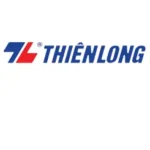Sega and Tomy opened a temporary arcade in Santa Monica on November 22, marking a measured test of American consumer interest in Japanese gaming formats years after both companies retreated from traditional arcade operations at home.
The Gacha & Catch store features over 100 capsule toy machines and claw games on the Third Street Promenade, selling merchandise from franchises including Sonic the Hedgehog and Demon Slayer. The venture comes through Japan Entertainment One, a Mitsubishi subsidiary coordinating the effort.
The timing appears opportunistic rather than strategic. Sega sold 85% of its Japanese arcade division to rental company Genda in 2020, then divested the remaining stake in 2022, ending a half-century of domestic arcade management as the pandemic decimated foot traffic. Tomy’s capsule toy business through subsidiary T-ARTS produces 40 to 60 new items monthly, but the company has faced challenges expanding beyond its home market.
Japanese arcade operators including Genda have aggressively pursued U.S. acquisitions, betting that anime popularity will drive demand for prize-based gaming formats. Yet the Santa Monica experiment remains limited in scope—a pop-up rather than permanent facility, testing whether nostalgic American consumers will embrace machines that thrived in 1980s Tokyo arcades.
Capsule toy vending machines debuted in Japan in 1965, becoming cultural fixtures long before gaming went digital. Whether that 60-year-old format translates to modern California shopping districts remains an open question neither company has answered with substantial capital commitment.





